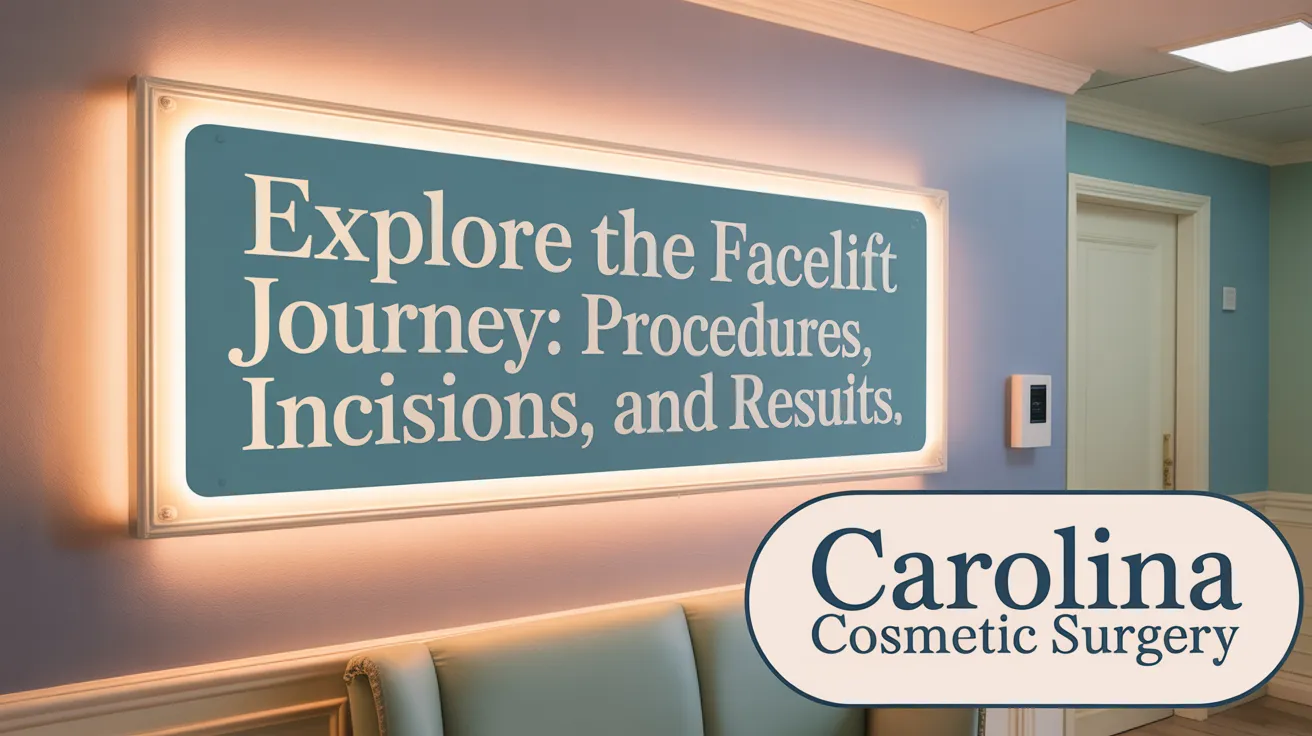Understanding Your Path in Cosmetic Surgery
Embarking on cosmetic surgery is a significant decision that involves multiple stages, each crucial to achieving the desired outcome and ensuring patient safety. This guide breaks down the patient journey step-by-step, from the early stages of research and consultation to preparation, surgery, and recovery. With insights from leading experts, we provide you with the knowledge and confidence to navigate this transformative process with clarity and care.
<!-- VIDEO:eyJsaW5rIjoiaHR0cHM6Ly93d3cueW91dHViZS5jb20vd2F0Y2g/dj1PeVpwaGNkTG1DUSIsImltYWdlVXJsIjoiZGF0YTppbWFnZS9qcGVnO2Jhc2U2NCwvOWovNEFBUVNrWkpSZ0FCQVFBQUFRQUJBQUQvMndDRUFBa0dCd2dIQmdrSUJ3Z0tDZ2tMRFJZUERRd01EUnNVRlJBV0lCMGlJaUFkSHg4a0tEUXNKQ1l4Sng4ZkxUMHRNVFUzT2pvNkl5cy9SRDg0UXpRNU9qY0JDZ29LRFF3TkdnOFBHamNsSHlVM056YzNOemMzTnpjM056YzNOemMzTnpjM056YzNOemMzTnpjM056YzNOemMzTnpjM056YzNOemMzTnpjM056YzNOLy9BQUJFSUFGTUFsQU1CSWdBQ0VRRURFUUgveEFBYkFBQUJCUUVCQUFBQUFBQUFBQUFBQUFBQUFRTUVCUVlDQi8vRUFENFFBQUlCQXdJRUF3WUNCd1lIQUFBQUFBRUNBd0FFRVJJaEJURkJZUk5SY1FZVUlqS0JrU09oRlVKeXNjSFI4UWRpZ3BLeThCY2tNME5TVTNQL3hBQWJBUUFDQWdNQkFBQUFBQUFBQUFBQUFBQUNBd1FGQUFFR0IvL0VBREVSQUFFREFnTUVDQVlEQUFBQUFBQUFBQUVBQWdNRUVSSWhNUk5CVWZBRkZDSnhnWkd4MFNNelVtR2g0VFJDOGYvYUFBd0RBUUFDRVFNUkFEOEEwOXhheTI3WWxRanlQUTFITG9OaWQ2dHBPTFBLdWt4UkVIbUczcXVrUlpDVHBBOU9sWGJiNzF4Nms4TnhKRzVWc1piR01lWDlhNWt0VlVrTEtoN0hhbUlvOUh5dWQ2ZVdKMzVJemVpNW9scGNHM2tISUErakNtMmljQTZsS2p6eFVyM1NZOG9YL3dBdE1TSVVKVmdRUnpCcllzdEZRN2NSelBKRElTSmszeG5HcGVoSCsrZEV0b1ZiS0Vuc2FTNXR6TVZNYmFKa1A0Y2dHY0h5N2l1WU9JZkg0RjJ2Z3o4c2ZxdjNVL3c1MFlTM2ZaY1J1STMxTUNmS3VaYm9IOVg4NmtUSUpwTmpnK2ZuVUs1aTBIVHF5ZlNtQkljbzgwaGs3Q285T3lEQnhUVkdvenRVbEtBU1FBTWtuQUE2MGxTN0E2RGNPR0tzc1B3c09ZSlpWeVBveG9KWk5uR1g4RTZtaE04ellodk5rZTVNTm5saVJ1UlZpU1FmTFlFWjdacGlTSjRpQTY0eU1namNFZGlOalZoWjhFc1Z0Z0o0NVpPcXRKTGpIcGlsNGhIRkh3dU1Sa1lTWUtvUE1aVnMvd0NtcXFsNlRmTE1JM0RJcm8ra2VnWTZhbU1yQ2JoVlZGSDBOQjI3YjFjcmw3SmFTa0xLRGdzS1dzdXNzVnJaSVJ6SDNGVDdGTFU4TG5sdW95M3VraXlaUURWS0d5QW1mMnNWVXBsSXJnTHRwWmNFYlozeFRqK0t6TW12NEFpdHBKT0MyMjVIV3E5N1M4V0N1WVpCRzY1RndyYUpib1dGdGRXZGpCUFBjeU9aajRPcFlzSENvcS9xanYyOHptcDA1ZG8rSXB3NUF6UlRSSW9qR3JTY2d5ZnhIcmtkS3pOdFpjVW5lNVdIaWkyNksrTUpFdzFBcXJiNGNaK2JIMHF6czFTTlFJeTBZeGo4Tml1QjVER05xUVlUbllxVjF5TzJZNXRxRmFzenh2YzVlM1gzZXpSRzhiNUJPMjQxZmRmdlZCN1F1c1YvRkFrY2EzRWFBWExSSVVSblBMU0R6MnhrOXhnNUdLbjNkcEJQYm1KU1kxSnlRcHdHT2M1STZuTysrZnZ2VlUvRHBqTjRrOTJ6Z1l3Y2t0dDNKMitsWkZHNE94WFF5VlVUNHl3TnNycmludWxxYnFBcFpQb2gwUlJ4UkV6Q1hTTUZtR3dHOVFlT2NEa3VieExlTzFQaHJISEZxOFBDdStOMnoxTzQzN1ZGZXpNN0dWYnVlUGZmRG5jODg1ODZqQ0c0eTJPSmNRYkRsUm03Znk5YVl5RjdTTEZCTFdReUFndHQzYXExdmVHVzZjR2Eyc2ZDbWtzNVkxTXNjb2VXWFZrSFZqY2ZFY0FIL3dBYVRqRVN4OFBhNHRiZTNndDRwSTE4QzZzZE1nYmJrNStiT0Ruc1Q2MVVJV2loTVN5T0ZWc1lERWJBN0E0cUxjeXZNeStOTkxOcCtYeFpXZlQ2Wkp4UnRwMzVYZGZOTGZXeFdkaFpZa1c5bG9wa2puNDF3bmhac09Ib1pZWXA3bGx0VkRaM1lnSG9NTGc5alVRd3ZIWTIxN3diaE52ZXZlM0V6TzdXL2lMQ29mQ0lGSHk1QjU5dTR4bnBMaVlUR1VYTTRsUC9BSFBHYlhqOXJPYVppdUpvRUtXMXhQQWgrWllaV1FIMXdSbXRpbGR1S0E5SXhrbTdmSEs0eUg3ODBYak0xM00wa0tRTnJPWWtYU3FIUElEcFMydnhKUEZyOE12SHUvVUFISi9JWi93MUhBQVVBQUFWMHJza2dLSDR4dUJqSiszV3BNc1dPRXg4UW9WTlViS3BiTmE5amROSzNCNUlFdGJqaUU4M2hTTTUvRlB5N1kzenYxL09yUzhsaUZyTExieUh3Q0ZUNHYxdXVUNTR3ZjhBTUt6ZDVkMlZseEc1U0pMZlpScVJqZ3hNUmtnanNDUDYxV0w3V2wrSW9JVlA2TFVhR0dOM1Avc0hwMEhVWkhYYm1JRzRLaHBmb0Y2RFdQMjFFNFJhdUdYUGN0SXgrZjUySUdyQTIrZ1AwcFNEOFdGWGNjeWVacHUxbWl2QWpXbHl0eUN1Q0lRZGo1bGNhbDVIbitkRVkvNlJFVDdBcVM1M1VEejg4NHJxV3ZhOFhhYnJ6dVNGOFJzOFc1L1M3YldjYUpFQXgxR2Y0MFVzSS9Ed1FnMGtqQ0hZZVZGSFlGQmUyUzBFY3NKYVFKRWZ4TUZzUDVmU3RGd2FKbmpkbzRMcU41dENMZFJvc29qd2VXRzlkemo5MVpLRGlWaEs0V0c1aVp0WlFnREJ5UHBWcHBFaW1TUFF3YVBUdWNnODhmdnFBOW1OdGdWY1JQRVVnYzRMUldOdVprdWpCS0xsamZ0NHJxQU1hWXd1TURrTWdVOHBSbXZEYnpSeDVuanRiZVJrMUFsUU5XQmc3NTFEUGJ0V09sdG5WejRiSERBQmxVREhJREg1VkpTWW9xRDNmNUJoVHR0MDJwUFZpZjdLUUt4Z3pEZWMvZGFpVFhJOTgxbkFQZVlTa2Foa0crL3h1RisrTStXZHdkMGdTZjNtNU0ycVdXRzFVWWlnUXNydm5HUnlMRFk3NEdDTytjZXZGb2MrR3R0TjhKeHNoOVBLbkRjQUFCSUNvSnlmaDYvYXM2czYycXdWck1WOFBQdXRIQzhvajRpOGt4Z21UdzRZWHU0VUFSbXhnbFVHTTcvYkdkcUkzV1RqWjRaTEVOYjIvaFR5ckVFRFM2U1M2ajdiMWxETHVTSVR2dnVwem1tbTFnRDRId1J6eVNUNjBRcGpyZEE2dGFRQmgzOC9qSlRIdlY0cHhTTzN0NEhodHRZaWdHbjVnVHV4STVrOCt3d1BQT2c0aXNxemNWYmlGcEZId3hJMlczekNvY3VBQXVnamNrbk9QVVZpaEFSTjRxTElOc2pHUmpieXBKVmR0RGFaTmFuWmlEa2VocGpvU1FMSFRtNlF5cmEwdUxtNitWcmFkeTExcnd5R0t3dU9GRjdPUy9sdG5lVmRZTXFTNEJSUXZrQmtuMXF0dExpelgyWnQrSjNGc3N0eFp5dEJicVFBa3JNQXlsdk1LTW42VlE2SlFBUXNnYnpBT2Faa1YxVlF5dUVCMkJCd0RSaW5KdmQycC8xS2RYTUJHRmxyQWpqd3NmQTVwcTV1QWtVOTNkbG5WRWFXVWpHVDF3Qnl5VHNPbTlZWGludFB4QzZSZ2tudWtHK1k3Y2tFais4M00va08xYWIycHVSYmNCbjU2cG5XQmM5enFKK3luNzE1MWRObU5sSFhhb2RkS2NlekJ5Q3RlaDZkaGkyemhkeE9xWnNoSkt6SURoV09wOERwL0NySEFKQzRHQjBwdmgweTJVa2I0MUVhdFFIWElJL2pVbTY0dURhdERIYnd3UkY5ZndMOFI4Z1RWY2IzVjR1R3VSYkFTRTRJT1Y5YTAvc3h4cTQ0ckRQYjNnYTV1TGZSTkVTMmxpbXJTY25yZ3N1TTc3bnkyeEt6ZUw4YnVGeC9kemlydjJVa0g2U0VTeGw0Ym1LU045Unc4bndsdHZMZFJUb0hsa2dzb3RaRTJTQndPNFhXMmxra2dsZFkxdEZWanErTjlKYnVSUlRiMjNqTEU3V01SYlFBUkkyNjlxU3IzdGJ1Znd1VGJzcmRyWHc5MWZTM2J3enlMYjJWdEVxc2ZqSnlUM05XMEVyUEFza3JaMnlUMnFvTmxMTE5KTkkyTmJsdEhNQUUvdnJ1NTRoWldNUHVFM2paZU01Q0xrNGJOSWt2WlBiWWxST0JjYnZ1TFNyZzIwYWtNMmd3UzVDallIVjhwNkhuU1dIdEJlWGNGeE0wRUVjZGpISWJwd3hZTTY1d0V3ZVczTS9TdWJPQzA4QnJlMGg0MTRUUm1QVHJJVUwyeWR2cFUyUGd0bEpIUEhIWlhFQ1NRckJMR2pBZkNPV1FDZCsvUEJxUGhjcFJNVjlGWFdudFJjc016aXltVTJiM0RlN01TWVNveUZmMTVVc2Z0RmUvb3E1djVQZGo0TUt0NFlnbFVoMklBR1cySTU4cXU3cXpzbnNaTEtTTVJ3eUxwWlk4S1dBeDVWQy9SbGo0UnQ3aHIxb0dLc0RQY2FsT2s1QUFKejlNVnZBOVlIeEhjb0RlMDF6REJmczRzN2cyOEtTSkxiTVdqTE0yTkIzNTlkcWVmamw4M0ZwYkNJMnlHTmtqQmVDVjlUa0RJeXV3d1QxcWQraXVIU1F5QUpJc1U4NHVHaVU0WFdPM1RsdUtZTnRZV2wxTGRyTGVoak40c2dTNHdqTm5xTTQ3WU5aZ2V0YlNIZ29VL3RiSkVlSXA0S2VKRzVXekp6aVlodEpCNzc1MnFjbkVlSzMwOTBuRElyUHc3V1R3V2FjdG1SeDh3R09RKzlNcGJjRmx0cmVId1ptRnZNWmsxSDRneE9UbnpHZW5ZVTVQWThNYTVsdS8rYmpMc0pKVWltWkVkaDFJQnJlemtRR2FBYUpyOU9YazNHSjdLQTJxTEhLSWwxd3l2cU9CcTNYWVlPZWVLc2VPeUJZbzF6akpMY3M4djYxWFFMdzIydW1uaWUvVm5sTXpLSlRvWmljbks1eFhmRXJ0YnFaREhrS0Z4aGh2bW13eHZEcmtLTlZTeHViWmk4Kzl2NytKdUkydGxHeFo3VU0wdTJ5czRYWWZSUm4xckx1M0xQTElOWEh0eHFrOW9ybzZRQWlSQUhxK0kxdzMxRlVCWW5HZVZWVXppNlFrcnFxVmdaQXhvNEJQR1VxQWVwNTB4TEtYNTB2eFN0cFFFbW40TGRFT3FVaHUzU2xKNjVpS0VhQVFHUFZ1VmFmMkpVeFg5emN5ZUkybU5ZZ1YzSlozQkgwMG8rZnQxck5GdFFNZmw4cHpnTUsxUHNtbmhjRHZwcEpaWTNsbVRUNFkzS3g1ejlNeWo3VTJBZkVDajFaK0M0Y2N2UEphdmgrWVluaVcya1JVa1lEVTJTZSs5SlZWZUlIbk1pV3Qyd2tBZk9mTWZzbWlyZmJsdVhQb3ViNm1KTzJUcnp4WHFVZG9pSEpHbzk2ZDhHRXZyYU5HYnpJelM1cGMwU1VseUYyQUFwdWFVSWpPUnNvelE3VTI0MUtRZVJGWXNWTHhDNWlhU1hTVGdMbjFxTmFOaTJCa2hDTUJ6Nkh2VXh1R3p0T1Q0NkpIMDBSL0g5em45MU9wdzJCU0M2bVZoK3RJZFIvUGxRZ0ZHUzBCUkxTNThXYnc0U0dYQkxZNUg2OHFqM1BEVjBOcWJYSjg1Sk9BY0hsdHlHOVd0eDRTQUIyeGpjQVZXenlGNU1LeDViQTc3VXdEaWtsM0JSMWowc1NDY2RBVG5IMXJ0bStBanRRQTJUbkgwb1ZkVDQ3VTBLSzVRRzJZRHlGZEx0amtONlYwT3RzZzdHbmJVckhjUnU0eXFzR09PWnJhQlpYMnE0Vjd6eHZoOHNxWFpobWphR1JyYUV1Nk11U3B4MUdIUWVnTlZmSHZZYTg0UmJlOUNkYnFNdUFZNG9tRDc5dC85bXQwT0lOdzVZNXJtL2tHdGtUdzlSWVN5RU5qZGpzQ2VneDhvb3VlTExOZHpUMnQzZEkyd2pDcjhBRzJRY3RqZjR0d05zajBxaHFHdEVoTG5XK3k3S2lsa01BYXhtSURLNjhzRnZkUmpFUEQ3akhlRnQveXFLOWhmc2RySzZBOHZDYitWZWh5KzMxdkJjQkh1K0lrbzM0aStESGc0QzQzQjdObjlyc0s1ay90QjRmSmIyNlNTOFJkMDFlS2RJWFVUeUlLdUR0dmdkKzJhSEF6Nmt6YlQvUno1THowY1B2d0NQYzduSC95YitWZWwzWU1WeEZFa3kyMEVrSlNHS0tMR2xkeXVOdHVZK3VmUE5SditJZHMyUTEzeEJkaUJvZ1R0dnUzN1czcDNxWE54T0xpRmxaOFJndUFrWGl1eGFhTWE4RjJHTURPK0FQWG5VaW1EUTdJcUZXdmxjd1ltMjU3bEh0cldLK3Q0NUMxMDVVYVMyM25udjUwVjJ0Mmx0Sk5GSmNYTWhFaDNDREE3YzZXcHd3V3pWWTR5azNicDQreTlNb05GRkVsTGhxS0tLMHNYSnF2NGpMSkdWVkdLZzg4VVVVUVFsVjJjN21nMFVVd0pKWEhXdW8rcG9vb2tseWFsQU5NRUR5cEtLSUpEdFZtUDdSU1J3SzJVZktib2JmNFQvT3M5N084UnU1WTN0cEoyTVVhYVZYQTJHRDE1OUtLS29LLzV6bDNIUXBJcFdlUHFzNHpNN0ZuSlppY2tucWFRMFVWSFUxZGl0NzdLT3kreDF4SnNXanVaQWhaUWNEVEdldmRpZnJSUlVtaytiNStpZ2RKZngvRWVvVWppVjdkTGRrSk82alNwd3B4elVHaWlpcGNqampPYWd4Uk0yYmV5TkYvLzlrPSIsInRpdGxlIjoiQSBTdGVwIGJ5IFN0ZXAgR3VpZGUgVG8gWW91ciBQbGFzdGljIFN1cmdlcnkgYW5kIEFuZXN0aGVzaWEgLi4uIiwic25pcHBldCI6Ii4uLiBqb3VybmV5PyBDYWxsIHVzIGF0ICgzMDUpIDU5Ni0yMjI4LiBDb25uZWN0IHdpdGggdXM6IOKAoiBGYWNlYm9vayAuLi4gTWVkaWNhbCBTZWNyZXRz4oCiNC4yTSB2aWV3cyDCtyAxMjoyNSDCtyBHbyB0byBjaGFubmVsIMK3IFByZW9wZXJhdGl2ZSAuLi4ifQ== -->The Initial Phase: Research and Choosing the Right Surgeon
Choosing the appropriate surgeon and understanding the available procedures form the foundation of a successful cosmetic surgery journey. Patients should begin by thoroughly researching surgeons who are qualified and experienced in the specific procedure they seek.
A crucial step is verifying that the surgeon is certified by the American Board of Plastic Surgery or an equivalent authority. This certification confirms that the surgeon has undergone rigorous training and adheres to high standards of practice. It’s also important to review the surgeon’s experience with the particular procedure, asking about their training, the number of surgeries performed, and patient success stories.
Evaluating the safety standards of the surgical facility is equally vital. Patients should ensure the facility is accredited and equipped with modern technology. Additionally, confirming the qualifications of anesthesia providers and the overall safety protocols reduces the risk of complications.
Understanding procedural options and setting realistic goals requires open discussion with the surgeon. During consultation, patients should discuss their aesthetic desires, medical history, and any concerns. Viewings of before-and-after photos of similar cases can give genuine insight into potential results.
Effective communication between the patient and surgeon is indispensable. Feeling comfortable asking questions and receiving clear answers fosters trust and leads to informed decision-making.
In summary, selecting a licensed and experienced surgeon, ensuring the safety of the surgical environment, and maintaining clear communication are main steps influencing both the safety and satisfaction of the surgical outcome. For more guidance, search for "how to choose cosmetic surgeon and understand surgery options" online to find comprehensive resources.
Initial Consultation: Setting Expectations and Planning

Consultation checklist and goal setting
The initial consultation is a crucial step where patients and surgeons align their expectations. Patients should come prepared to discuss their aesthetic goals, concerns, and reasons for considering surgery. It’s important to have realistic expectations about outcomes and recovery times.
Discussing medical history and physical exam
During the meeting, the surgeon will review the patient’s medical history, including previous surgeries, medications, allergies, and lifestyle factors. A physical examination of the area to be treated is performed to assess skin quality, facial structure, and overall health.
Exploring surgical and non-surgical options
Surgeons will explain available procedures, including surgical options and minimally invasive alternatives. Visual aids like before-and-after photos or 3D imaging help patients visualize potential results. This discussion helps tailor a treatment plan suited to the patient's needs.
Reviewing before-and-after photos and procedural risks
Reviewing images of previous successful cases provides insights into expected outcomes. Surgeons also openly discuss the risks, such as infection, scarring, or unusual healing, allowing patients to make informed decisions.
Understanding recovery time and post-op care
Patients learn about the expected recovery duration, activity restrictions, and post-surgical care routines. Clear guidance on managing swelling, pain, and follow-up appointments encourages a smooth healing process.
Verifying surgeon credentials and facility cleanliness
It’s vital to confirm the surgeon’s qualifications, including board certification and hospital privileges. Observing the cleanliness and professionalism of the healthcare facility reassures patients of quality standards.
This comprehensive consultation process ensures that patients leave well-informed, with a realistic outlook and confidence in their chosen surgical team.
Pre-Operative Preparation: Optimizing Your Body and Mind

What are the essential preparations and considerations before undergoing a cosmetic procedure?
Preparing for cosmetic surgery involves several important steps to ensure a smooth procedure and optimal healing. First, patients should review all pre-operative instructions and educational materials provided by their surgeon. Understanding what to expect helps reduce anxiety and sets realistic expectations.
Medical evaluations are a crucial component. Patients typically need to undergo tests like blood work, EKG, or other assessments based on their health status. Disclosing all medications, vitamins, and supplements is essential, as some may need to be stopped prior to surgery to lower the risk of complications.
Lifestyle changes greatly support recovery. Patients are advised to quit smoking, avoid alcohol, and refrain from certain medications or supplements as instructed by their surgeon. These habits can impair healing and increase the risk of infection.
Fasting is usually required before surgery to reduce anesthesia risks; patients should follow specific instructions regarding when to stop eating and drinking. On the day of the procedure, it’s vital to arrive prepared—wear loose, comfortable clothing, and pack a bag with personal items. Removing jewelry, makeup, and contact lenses helps create a safe environment in the surgical setting.
Ensuring support systems are in place is equally important. Patients should arrange transportation to and from the facility and plan for recovery help at home. This includes preparing a recovery space with necessary supplies, such as cold compresses, medications, and comfortable seating.
Emotionally, patients benefit from mindfulness practices like meditation. These can reduce stress, help manage anxiety, and foster a sense of control. Open communication with the surgical team about any concerns or questions is vital.
By paying attention to these preparations—medical, lifestyle, logistical, and emotional—patients set the stage for a successful surgical outcome, smoother recovery, and better overall satisfaction.
The Surgical Procedure: What Happens on the Day

Arrival and check-in at the surgical facility
On the day of surgery, patients arrive at the designated hospital or surgical center, where they check in and complete necessary paperwork. Staff prepares the patient for surgery and reviews their identification, consent forms, and medical history. This process ensures everything is in place for a smooth procedure.
Preoperative measures including anesthesia and markings
Before anesthesia, the surgical team confirms the patient’s identity and surgical site. The surgeon may mark the face or body to guide incisions and adjustments. An anesthesiologist administers sedation or general anesthesia to keep the patient comfortable throughout the operation.
Details of common surgical techniques such as facelifts
During a facelift, for example, incisions are made along the hairline and around the ears. The surgeon lifts and tightens the skin and underlying tissues, removing excess tissue. For other procedures like liposuction or rhinoplasty, different techniques and incision patterns are employed depending on the targeted area.
Duration and setting of surgery
Most cosmetic surgeries last from one to several hours, depending on complexity. The operation is performed in a sterile environment within an accredited surgical facility equipped to handle emergencies. The patient remains under anesthesia for the duration of the procedure.
Intraoperative care and team roles
A team typically includes the surgeon, anesthesiologist, nurses, and technical staff. Each member has specific responsibilities, from administering anesthesia to monitoring vital signs and ensuring sterile conditions. The surgeon carefully performs the planned modifications while the team supports with instruments and medication.
Immediate postoperative monitoring
After completing the surgery, the patient is moved to a recovery area where vital signs are closely monitored. Recovery staff observe for any immediate complications, manage pain with medications, and ensure the patient regains consciousness comfortably. Once stable, the patient is prepared for discharge with post-operative instructions.
This phase is critical for ensuring patient safety and setting the foundation for effective healing. Clear communication and professional care during this time help maximize the surgery’s success and patient satisfaction.
Post-Surgery Recovery: Managing Healing and Expectations

What should patients expect during the recovery phase after cosmetic surgery?
Recovery from cosmetic surgery involves a series of common experiences and careful management. Patients should anticipate some swelling, bruising, and discomfort, which differ based on the specific procedure performed. These symptoms generally decrease over time as healing progresses.
Pain is often manageable with prescribed anti-inflammatory medications, and early movement, such as light walking, is encouraged to enhance circulation. However, strenuous activities must be avoided until the surgeon provides clearance, to prevent complications and ensure effective healing.
Following post-operative care instructions is crucial. This includes appropriately managing dressings, drain care if applicable, and taking prescribed medications. Cold packs can be helpful to reduce swelling and promote comfort.
Support systems are important during initial recovery, especially in the first few days, which may involve assistance with daily tasks and ensuring proper hydration. Patients should stay alert for signs of complications including excessive bleeding, increased swelling, fever, or unusual pain, and communicate with their surgeon immediately if these occur.
Recovery times vary, with some procedures healing in a few weeks and others taking several months. Consistently following medical advice and attending follow-up appointments are essential for optimal results and safe healing.
Summary Table of Post-Surgery Recovery Expectations
| Aspect | Typical Experience | Tips | Duration Approximate |
|---|---|---|---|
| Swelling & Bruising | Common, can be significant initially | Use cold packs, keep head elevated | 1-4 weeks |
| Discomfort & Pain | Managed with medication | Follow prescription instructions | First few days |
| Activity Level | Limited strenuous activities | Gentle walking encouraged | First 1-2 weeks |
| Follow-up Care | Essential | Attend all scheduled visits | Ongoing |
| Signs of Complication | Emergency: bleeding, fever | Contact surgeon immediately | N/A |
Understanding what to expect and adhering to post-operative guidance support a smooth recovery. Patience is vital as the body heals, and open communication with the healthcare team plays a significant role in achieving the best possible outcome.
Understanding Common Facial Procedures: The Facelift Journey

What are common procedures involved in facial cosmetic surgery, such as facelifts, and what does the process involve?
Facial cosmetic surgeries, especially facelifts, are designed to lift and rejuvenate the face to create a more youthful appearance. The typical facelift procedure involves making incisions around the ear, extending into the hairline, to access the underlying tissues.
During surgery, the surgeon lifts and repositions deeper structures such as the SMAS layer (Superficial Musculoaponeurotic System), which provides better and longer-lasting results. Excess fat and skin are then carefully removed or redistributed to tighten the face and neck. The skin is re-draped over the new contours and sutured in place with hand-sewn incisions that are discreetly hidden.
The process usually lasts between 3 to 4 hours and is performed under light general anesthesia, often on an outpatient basis. The surgeon’s goal is to reduce sagging, jowls, and neck laxity, restoring a more defined, youthful profile.
Incision placement and tissue manipulation
Incisions are typically hidden along the natural creases of the ear and within the hairline, minimizing visible scarring. Tissue manipulation involves tightening the foundational layers of the face, which helps achieve a natural look and longer-lasting results.
Anesthesia and duration
Most facelift procedures are done under light general anesthesia or deep sedation combined with local anesthesia. The operation duration ranges from three to four hours, depending on the extent of work.
Postoperative care and healing timeline
Recovery involves managing swelling, bruising, and scar healing. Patients are advised to keep their head elevated, apply cold compresses, and avoid strenuous activities for several weeks. Most swelling and bruising resolve within two to three weeks, with full healing taking approximately 2.5 to 3 weeks.
Expected outcomes and combining with other treatments
The primary goal is to reduce visible signs of aging, such as sagging skin and jowls, resulting in a smoother, firmer face and neck. Many patients choose to combine a facelift with additional procedures like fat transfer, skin resurfacing, or eyelid surgery for comprehensive rejuvenation.
Long-term maintenance and skin care
Maintaining a healthy lifestyle, practicing good skincare, and protecting skin from sun damage can prolong the results. Regular follow-ups with the surgeon and possibly non-invasive treatments help sustain facial youthfulness over the years.
| Aspect | Details | Additional Notes |
|---|---|---|
| Procedure duration | 3-4 hours | Outpatient setting |
| Anesthesia | Light general anesthetic or deep sedation | |
| Incision placement | Around ear, within hairline | Minimized visible scars |
| Main focus | Tightening face and neck tissues | Longer-lasting results |
| Healing time | About 2.5 to 3 weeks | Complete swelling resolution |
| Combining treatments | Fat transfer, skin treatments | Enhanced rejuvenation |
| Long-term care | Healthy lifestyle, skin protection | Prolongs results |
For more details on facelift procedures and recovery, searching "facelift procedure and recovery process" can provide extensive information tailored to individual needs.
Embarking on Your Cosmetic Surgery Journey with Confidence
Understanding each step of the cosmetic surgery process—from selecting the right surgeon and preparing adequately, through the surgical procedure itself, to dedicated recovery care—empowers patients to make informed decisions and attain the best possible outcomes. Prioritizing realistic expectations, healthy lifestyle changes, and open communication with your medical team facilitates not only physical healing but also emotional well-being. Armed with this knowledge, potential patients can confidently approach cosmetic surgery as a carefully planned journey toward enhancing their natural beauty and self-confidence.
References
- Maximizing your glow: Ideas for embracing the patient ...
- How to Prepare for Cosmetic Surgery: Patient Checklist
- Your facial surgery journey: a step-by-step guide
- Everything You Need to Know About the Plastic Surgery ...
- Choosing the Right Cosmetic Procedure: A Step-by- ...
- The Facelift Journey: A Step-by-Step Guide to Facial ...
- Navigating your Plastic Surgery Journey: Steps After the ...
- Tips for Choosing a Cosmetic Surgeon | ABCS
- Finding the right plastic surgeon for you
- Tips for Choosing a Cosmetic or Plastic Surgeon
